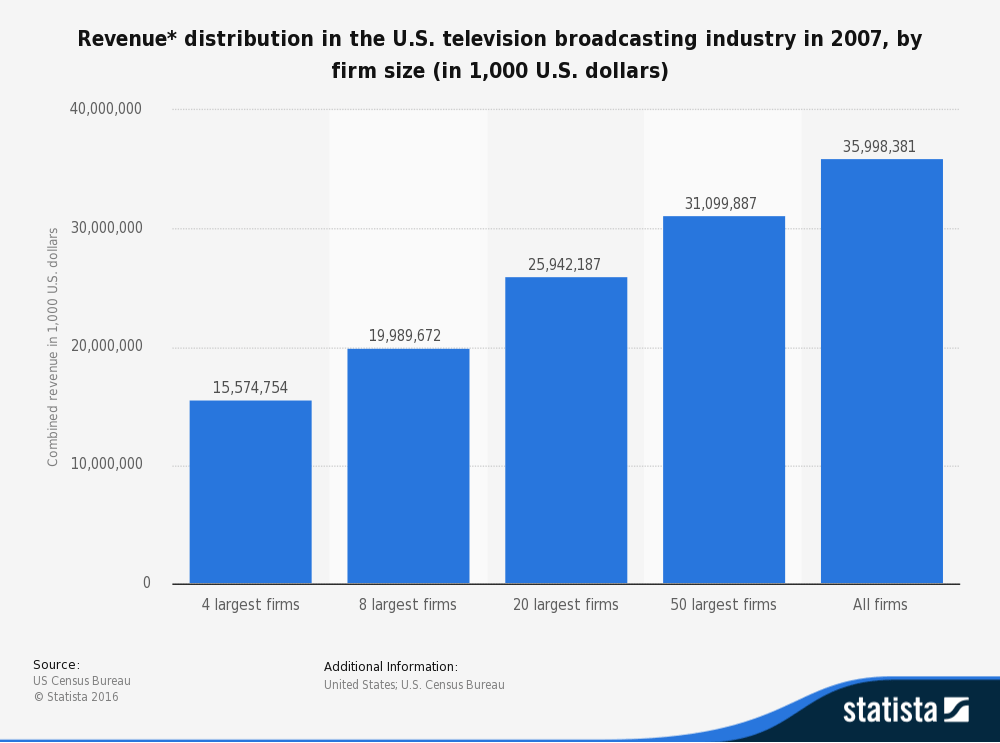Gone are the days when people use to have a relaxed life, and there was the family time when they would watch the news or have a cup of tea with their favorite new papers and news channels. People are getting busier day by day, and the lives are getting more and more digital & robotic. We don’t have enough time to sit down and watch what’s happening around us. Media broadcasting channels have been upgrading themselves to reach us in the best possible ways. One such technology developed with the intent to build a new kind of media outlet for people who don’t watch traditional news networks on TV anymore is Video monetization on online platforms. It’s an excellent way to maximize your investment and engage with your audience directly.
Source : Statista.com
There are broadcasters out there who are taking advantage of social media and using it in innovative ways. Al Jazeera English for example, has a program called The Stream that explores the potential of social media to disseminate news NPR. The public radio network in the United States has not only posted especially good stories that were broadcast on the radio on their Facebook and Twitter feeds, but they are also soliciting content from listeners. Last fall, they put out a call to Americans living outside the US to tell NPR how they planned on celebrating the holiday of Thanksgiving.
While cool broadcasting/social media link-ups are happening, many stations aren’t exploiting the full potential. Maybe they still think of Facebook as a place for talking about what you had for breakfast. More likely, they don’t think they have the staff or the time to add another task to their already packed days. But stations that neglect social media run the risk of losing relevance and losing their audiences. And these positions are also bypassing an incredibly useful tool that can add a great deal of value to their broadcast content and general news operation.
The BBC jumped head first into online journalism early on and has since committed to social media. In fact, last October, the BBC announced it had signed a new partnership with Twitter Amplify, a video promotion tool. It’s the first partnership between Amplify and a global broadcaster. The BBC has said it feels social media has three highly valuable journalistic roles:
- A platform for content – it’s a way of getting its journalism out there, in short form or as a tool to take people to their journalism on the BBC website, TV or radio networks. It engages different and younger audiences.
- Newsgathering – it helps reporters gather more, and sometimes better, material and find a range of voices, ideas and eyewitnesses quickly.
- Audience engagement – allows better listening to and talking with the audience, and allows the BBC to speak to different groups.
Video monetization platforms are growing in number. From YouTube to Vimeo, from Facebook to Instagram, you’ll be able to upload, monetise, and market with any and all of these platforms. There are countless video platforms. Some are specialised; some are generalised. Some are must-haves, some aren’t.
Here are the major players you should be looking at:
YouTube – This is a must-have.
Instagram –Instagram isn’t just for photos. You can create short videos that auto play when they show up in users’ feeds.
Vine – Vine is Twitter’s social, micro-vlogging platform. Each video can only be 6 seconds long. So be creative:
Twitter – Twitter now supports video hosting. Like Facebook, Twitter has decided to take on YouTube with its own native video platform. This video player will allow you to host videos up to 10 minutes long.
Snapchat – Today brands like National Geographic, Daily Mail have full-time staff for Snapchat. It’s been one of the fastest-growing apps and is famous amongst teenagers. Snapchat did a redesign off recently and placed Discover – the news and entertainment section one swipe away from the main page in the “Stories” section, where Live Stories and updates from friends located. Discover is well served with user videos, text, and photos from major media companies such as ESPN, MTV, CNN, among others.
Other Video Monetization Platforms – There are plenty of other platforms out there, such as Dailymotion, Ustream, and Metacafe. But these have tiny market shares compared to the critical networks listed above. If you have additional resources, then you may consider exploring a few, but their ROI won’t have the same potential as the more significant video monetization platforms. And the other platforms that generate lots and lots of traffic tend to be highly specialized. Twitch, for instance, only caters to gamers.
Once you begin to employ the above tactics in your video distribution strategy, start to review the analytics and see how the Audience is behaving in regards to each of these methods. Improve the processes along the way to find further success in a digital economy.






